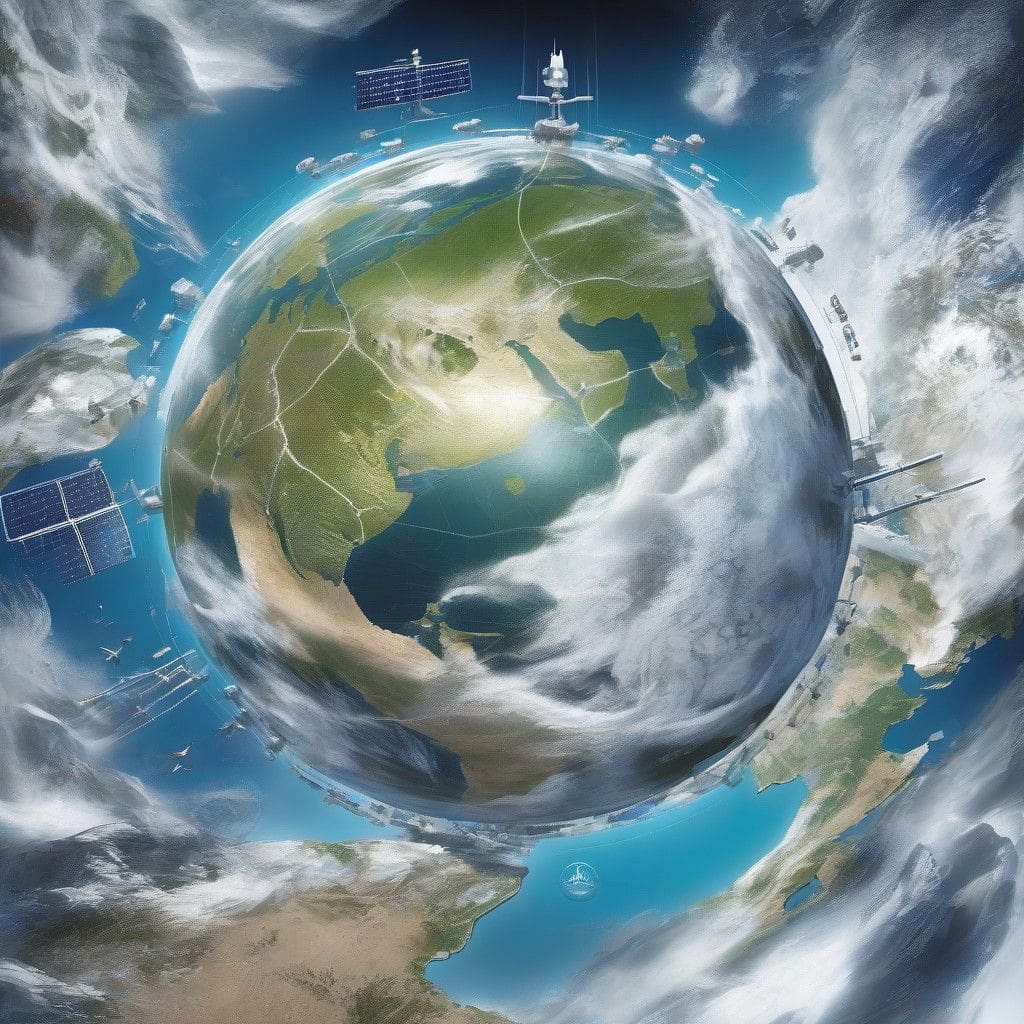In an age where climate change is arguably the most pressing challenge humanity faces, Earth observation satellites emerge as indispensable tools. These satellites provide unprecedented insights into our planet’s climate systems, enabling governments, scientists, and communities to monitor critical changes that impact all life forms on Earth. As global coverage expands through advancements in technology, the importance of satellite data in understanding environmental phenomena cannot be overstated.
Earth observation satellites deliver vital information on land cover changes, temperature trends, sea level rise, sea ice melt, and the frequency and intensity of extreme weather events. With each passing year, the demand for precise climate data increases, necessitating an evolution in the global satellite framework to meet these challenges.
One illustrative example pertains to the pressing issue of methane emissions, a potent greenhouse gas contributing significantly to climate change. Tackling this problem requires data from various satellites, both public and private. Methods for accurately tracking methane levels and their sources are essential for effective mitigation strategies. Organizations such as the Committee on Earth Observation Satellites (CEOS) and the Coordination Group for Meteorological Satellites (CGMS) are actively working to develop and coordinate these satellite systems and ground infrastructures. Their joint initiatives are crucial in standardizing data collection methods and ensuring that information is both reliable and accessible.
The importance of these topics comes to a head at events like the upcoming COP29, a global gathering where nations unite to confront climate change. This conference serves as a platform for countries to negotiate commitments to actionable strategies aimed at reducing carbon footprints and mitigating environmental impact. Satellite data plays a central role in these negotiations, providing trusted and verifiable information that influences policy decisions. By supplying concrete evidence of climate trends, satellite technology empowers nations to make informed choices that align with scientific reality.
In particular, the CEOS statement highlights six key areas where satellite data has significantly boosted our understanding of climate dynamics. These areas include:
1. Monitoring Land Cover Changes: The ability to observe land use alterations enables better land management practices and biodiversity conservation efforts. Recognizing how urban areas expand or forests diminish is crucial for developing effective environmental policies.
2. Climate Trends Tracker: Satellites assist in providing long-term temperature trends, helping scientists and policymakers understand the rate of climate change. This tracking is essential for validating climate models and predicting future scenarios.
3. Sea Level Rise Observations: Continuous monitoring of sea levels aids in understanding the impacts of glacial melting and thermal expansion of the oceans. Such information is vital for coastal planning and climate resilience strategies.
4. Sea Ice Melting Patterns: The Arctic and Antarctic regions are sensitive indicators of climate change. Satellites help observe variations in sea ice extent, providing essential data for climate models and ecological studies.
5. Extreme Weather Event Analysis: Satellites play a crucial role in forecasting and analyzing extreme weather patterns, such as hurricanes and heatwaves. This capability is essential for disaster preparedness and response efforts.
6. Greenhouse Gas Monitoring: Advanced satellite technology can measure concentrations of greenhouse gases like carbon dioxide and methane, which is critical for assessing the effectiveness of international climate agreements.
As CEOS, along with other international entities, continues to enhance existing satellite capabilities, the role of the UK Space Agency as the Chair of CEOS is particularly noteworthy. The agency’s leadership helps orchestrate the activities and collaborative efforts of various countries, ensuring that the objectives of the CEOS work plan are met. This collaboration reflects a global commitment to strengthening the Earth observation satellite framework, essential for navigating the challenges posed by climate change.
The path forward hinges on the integration of satellite data into climate policies and action plans. As more governments recognize the invaluable insights provided by Earth observation satellites, we will likely see an increase in investments directed toward this technological frontier. The need for interdisciplinary approaches combining satellite data with ground-level observations will be vital for crafting comprehensive climate strategies.
For businesses, this presents an opportunity to innovate. Companies specializing in satellite technology, data analytics, and environmental consulting stand to benefit from a burgeoning market driven by climate action demands. Collaboration among tech innovators, researchers, and policymakers will pave the way for new business models that contribute to advancing global sustainability efforts.
In conclusion, Earth observation satellites offer an unparalleled perspective on the changes occurring across our planet. Their integration into domestic and international policy discussions is essential for informed decision-making. With events like COP29 highlighting the need for collective action, the role of satellite data will undoubtedly shape the trajectory of climate change response strategies worldwide.












